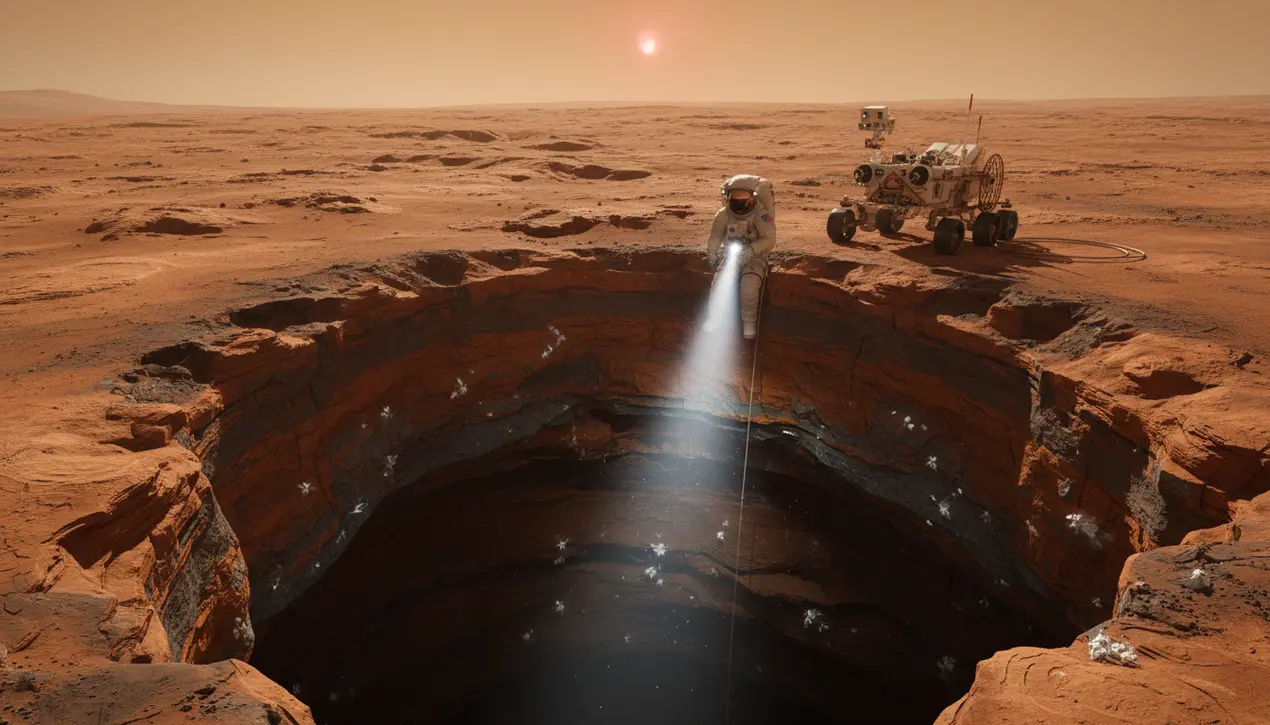
Sciencespace & astronomyExoplanets and Habitable Worlds
Martian Caves May Hold Clues to Ancient Water and Life.
TH
Thomas Green
2 hours ago7 min read1 comments
In a discovery that feels ripped from the pages of a science fiction novel, a research team from Shenzhen University has thrust eight enigmatic Martian caves into the scientific spotlight, proposing a compelling narrative where ancient volcanic fury and flowing water may have conspired to create potential sanctuaries for life. Published in The Astrophysical Journal Letters, their study zeroes in on the Hebrus Valles region, a landscape scarred by what appears to be dramatic volcanic activity that literally cracked the Martian crust open.But the real intrigue lies not just in how these caverns were born, but in what shaped them afterward. The researchers present a convincing case that these aren't merely volcanic voids; their intricate morphology and the surrounding geology bear the unmistakable fingerprints of subsequent water erosion.This is the cosmic detective work that gets astrobiologists' hearts racing. The presence of water is the non-negotiable prerequisite for life as we understand it, and these caves represent something profoundly more promising than a barren surface: a protected environment.On Mars, the surface is a lethal wasteland, bombarded by solar and cosmic radiation and possessing an atmosphere too thin to breathe. A cave, however, is a natural radiation shelter.If that cave also once contained standing water or even just persistent humidity, it becomes a prime candidate for having hosted microbial life, potentially preserving its fossilized remains for billions of years, shielded from the relentless environmental degradation that has erased so much of the planet's aqueous history. This isn't merely an academic exercise; it's a direct line to answering one of humanity's most profound questions: Are we alone? The methodology here is a masterclass in remote sensing, utilizing high-resolution imagery from spacecraft like NASA's Mars Reconnaissance Orbiter to analyze the caves' geometry, the texture of their entrances, and the tell-tale mineral signatures in the surrounding regolith that hint at aqueous alteration.The Hebrus Valles system itself is a complex network of channels, long thought to be formed by catastrophic floods, making the connection to water-sculpted caves a logically consistent and powerful hypothesis. Think of these subterranean labyrinths as time capsules, their dark, silent chambers potentially holding a record of a warmer, wetter Mars, a planet that may have looked startlingly similar to Earth in its distant past.The implications for future exploration are staggering. Missions like the Perseverance rover are currently scouring Jezero Crater for surface biosignatures, but the ultimate prize might lie underground.These specific caves identified by the Shenzhen team now vault to the top of the list for potential robotic, and eventually human, exploration. Imagine a future mission where a specialized rover, perhaps equipped with rappelling gear or even a drone designed for subterranean flight, ventures into one of these openings, its lights piercing a darkness that has been absolute for eons, searching the walls and floors for the subtle, layered structures of stromatolites or other microbial fossils.The technological and logistical challenges are immense, but the payoff would be a paradigm shift in our understanding of biology and our place in the cosmos. This research elegantly bridges planetary geology and the nascent field of astrobiology, demonstrating that the path to finding extraterrestrial life may not be on the dusty plains, but in the hidden, sheltered depths below, waiting for us to have the courage and the ingenuity to look.
#Mars
#caves
#water
#ancient life
#research
#Shenzhen University
#featured
Stay Informed. Act Smarter.
Get weekly highlights, major headlines, and expert insights — then put your knowledge to work in our live prediction markets.
Related News
Comments
Loading comments...
© 2025 Outpoll Service LTD. All rights reserved.